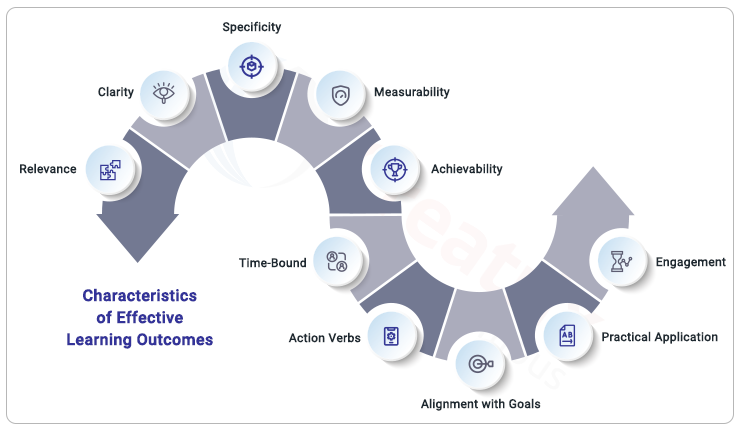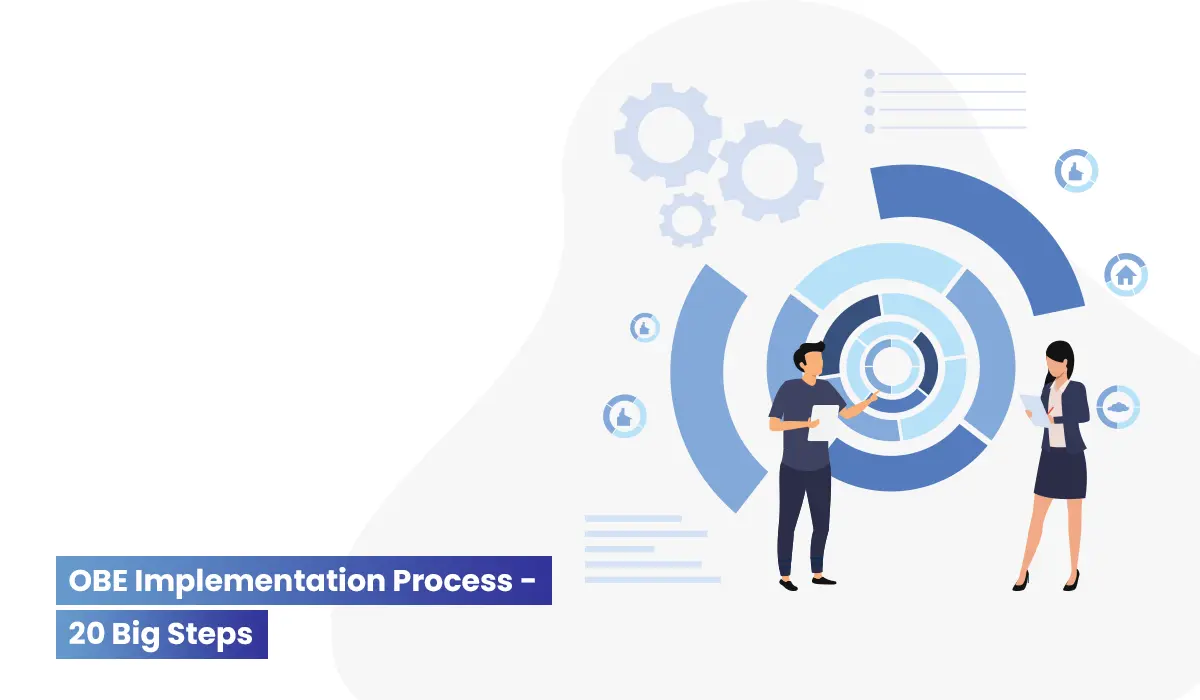What are Learning Outcomes?

In the realm of education, the fundamental question persists: "What are learning outcomes?" These outcomes, acting as a guiding lighthouse, navigate educators and learners through the seas of knowledge, encapsulating the measurable skills and attributes a student should acquire by the end of a course. According to a study by the American Council on Education, institutions that explicitly define and implement learning outcomes witness a substantial improvement in both student engagement and academic performance. This underscores the pivotal role learning outcomes play in shaping the educational experience. Join us on this exploration of how learning outcomes not only shape individual learning paths but also contribute to the broader transformation of education.
What are Learning Outcomes?
Learning outcomes are the targeted destinations on the educational journey, defining the specific knowledge, skills, and competencies a learner is expected to acquire by the completion of a course or program. They serve as explicit statements that bridge the gap between educational intentions and tangible achievements.
These outcomes act as a guiding framework for educators, shaping instructional strategies and assessment methods. Emphasizing clarity and measurability, learning outcomes propel education beyond mere content delivery, focusing on the demonstrable and applicable aspects of learning. Whether in academia or professional training, the definition and implementation of learning outcomes mark a transformative shift towards outcome-oriented education, ensuring a more comprehensive and impactful learning experience for students.

Characteristics of Effective Learning Outcomes

Effective learning outcomes are the backbone of a robust educational framework, providing a clear roadmap for both educators and learners. These outcomes possess distinct characteristics that contribute to their efficacy and impact:
- Relevance: Directly align with program goals for practical application.
- Clarity: Clear and unambiguous for shared understanding.
- Specificity: Detail specific skills, knowledge, or competencies.
- Measurability: Allow assessment through observable behaviors.
- Achievability: Realistic and attainable for a sense of accomplishment.
- Time-Bound: Include a specified timeframe for focused learning.
- Action Verbs: Use verbs indicating expected student behavior or performance.
- Alignment with Goals: Seamlessly align with program objectives.
- Practical Application: Emphasize real-world application of knowledge and skills.
- Engagement: Promote active student participation and ownership.
Types of Learning Outcomes

1. Cognitive Learning Outcomes
Cognitive outcomes focus on the acquisition of knowledge and intellectual skills.
Example: A student mastering the principles of physics, demonstrating understanding through problem-solving.
2. Affective Learning Outcomes
Affective outcomes involve the development of attitudes, values, and emotional intelligence.
Example: Cultivating empathy in students through literature, fostering an appreciation for diverse perspectives.
3. Psychomotor Learning Outcomes
Definition: Psychomotor outcomes pertain to the development of physical and motor skills.
Example: A medical student acquiring the skill to perform a surgical procedure through hands-on training.
Importance of learning outcomes
Within the educational landscape, learning outcomes stand as the cornerstone, wielding a host of advantages that intricately shape and elevate the entire learning process. Some of them are discussed below for you.
- Guided Clarity: LOs illuminate a clear path, providing educators and learners with a well-defined journey.
- Alignment with Curriculum: Harmonizes curriculum design seamlessly with overarching educational objectives.
- Tailored Teaching Impact: Customizes teaching strategies to leave an indelible impact on the learning experience.
- Mastery Measurement: Facilitates assessments, precision-measuring knowledge, and skill acquisition.
- Learner-Centric Pivot: Pivots the educational focus onto learners, encouraging and sustaining engagement.
- Fuel for Continuous Evolution: Empowers perpetual refinement, ensuring educational programs stay dynamic.
- Quality Benchmark: Establishes an unwavering benchmark, upholding the highest standards of program quality.
- Transparency and Accountability: Advocates for transparency, instilling accountability within educational institutions.
- Motivation Catalyst: Catalyzes heightened student motivation by setting clear and achievable goals.
- Navigator of Professional Growth: LOs serve as a guide, navigating educators toward continuous professional development aligned with the ever-evolving educational landscape.
How to Write Effective Learning Outcomes?

Follow these simple guidelines to create effective learning outcomes that are clear, measurable, and conducive to effective teaching and learning.
- Start with Action Verbs: Use specific, measurable action verbs to describe what students should be able to do. For example, "analyze," "create," or "evaluate."
- Be Clear and Concise: Keep learning outcomes clear, concise, and unambiguous. Avoid jargon or complex language that may confuse learners.
- Focus on One Outcome: Each learning outcome should address a single skill or concept. Avoid combining multiple ideas into one outcome.
- Use S.M.A.R.T. Criteria: Ensure learning outcomes are Specific, Measurable, Achievable, Relevant, and Time-Bound. This provides clarity and facilitates assessment.
- Align with Program Goals: Ensure that learning outcomes align with the broader goals of the educational program or course. They should contribute to the overall objectives.
- Consider Bloom's Taxonomy: Apply Bloom's Taxonomy levels (knowledge, comprehension, application, analysis, synthesis, evaluation) to structure outcomes based on cognitive complexity.
- Include Conditions and Criteria: Specify any conditions or criteria necessary for achieving the outcome. This adds context and helps in assessment design.
- Be Student-Centric: Frame outcomes from the student's perspective. What should the learner be able to achieve, demonstrate, or understand after completing the course?
- Use Observable Behaviors: Craft outcomes that describe observable behaviors. This makes assessment and measurement more straightforward.
- Include Real-World Application: Emphasize how the learning outcome can be applied in real-world scenarios. This enhances the practical relevance for students.
- Review and Revise: Regularly review and revise learning outcomes to ensure they remain relevant and aligned with evolving educational objectives.
- Seek Feedback: Get feedback from colleagues or subject matter experts to ensure that the learning outcomes accurately reflect the intended educational goals.
Implementing Learning Outcomes in Education. Step-by-Step process

Challenges and Solutions to Implementing Learning Outcomes

Learning Outcomes Automation Benefits with Creatrix Campus
Creatrix Campus offers a cutting-edge Learning Outcomes Automation solution, revolutionizing the educational landscape. Here's how our platform delivers unparalleled benefits:
Effortless Outcome Creation
Creatrix Campus simplifies the process of creating learning outcomes with intuitive tools, saving educators valuable time and ensuring precision.
Dynamic Curriculum Mapping
Our platform facilitates dynamic curriculum mapping, allowing institutions to effortlessly align learning outcomes across programs and adapt in real time to changing educational needs.
Precision in Assessment
Automated assessment tools ensure precise measurement of learning outcomes, providing educators with accurate insights into student performance and facilitating targeted improvements.
Comprehensive Faculty Training
Creatrix Campus offers accessible and comprehensive training modules, ensuring that faculty members are well-equipped to seamlessly integrate and leverage learning outcomes in their teaching methodologies.
Integrated Technology Solutions
Seamlessly integrated technology eliminates data silos, providing a centralized solution for efficient tracking, reporting, and management of learning outcomes data.
Continuous Improvement
Culture With Creatrix Campus, institutions can foster a culture of continuous improvement, where learning outcomes are regularly reviewed and adapted to meet evolving educational needs.
Enhanced Stakeholder Communication
Clear communication of learning outcomes to all stakeholders, including students, faculty, and external accrediting bodies, is simplified with our platform.
Conclusion
Embrace the transformative potential of learning outcomes as we conclude this insightful journey. The definition, significance, and impact on education have been unraveled, highlighting their pivotal role. Explore the seamless automation of learning outcomes with Creatrix Campus – your partner in Outcome Based Education. Elevate your institution’s academic journey and efficiency. Leap with Creatrix Campus, where education meets innovation. Request a demo today!



